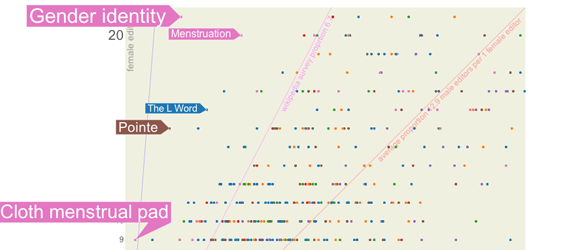Bias ratio Wikipedia the free encyclopedia
Post on: 16 Март, 2015 No Comment

From Wikipedia, the free encyclopedia
The bias ratio is an indicator used in finance to analyze the returns of investment portfolios, and in performing due diligence .
The bias ratio is a concrete metric that detects valuation bias or deliberate price manipulation of portfolio assets by a manager of a hedge fund, mutual fund or similar investment vehicle, without requiring disclosure (transparency) of the actual holdings. This metric measures abnormalities in the distribution of returns that indicate the presence of bias in subjective pricing. The formulation of the Bias Ratio stems from an insight into the behavior of asset managers as they address the expectations of investors with the valuation of assets that determine their performance.
The bias ratio measures how far the returns from an investment portfolio — e.g. one managed by a hedge fund — are from an unbiased distribution. Thus the bias ratio of a pure equity index will usually be close to 1. However, if a fund smooths its returns using subjective pricing of illiquid assets the bias ratio will be higher. As such, it can help identify the presence of illiquid securities where they are not expected.
The bias ratio was first defined by Adil Abdulali, a risk manager at the investment firm Protégé Partners. The Concepts behind the Bias Ratio were formulated between 2001 and 2003 and privately used to screen money managers. The first public discussions on the subject took place in 2004 at New York University’s Courant Institute and in 2006 at Columbia University. [ 1 ] [ 2 ] In 2006, the Bias Ratio was published in a letter to Investors and made available to the public by Riskdata, a risk management solution provider, that included it in its standard suite of analytics.
The Bias Ratio has since been used by a number of Risk Management professionals to spot suspicious funds that subsequently turned out to be frauds. The most spectacular example of this was reported in the Financial Times on 22 January 2009 titled Bias ratio seen to unmask Madoff ! [ 3 ]
Contents
§ Explanation [ edit ]
Figure 1
The smooth blue histogram represents a manager who employed Option 1, and the kinked red histogram represents a manager who chose Option 2 in those critical months. Given the proclivity of Hedge Fund investors for consistent, positive monthly returns, many a smart businessman might choose Option 2, resulting in more frequent small positive results and far fewer small negative ones than in Option 1. The reserve that allows false positives with regularity is evident in the unusual hump at the -1.5 Standard Deviation point. This psychology is summed up in a phrase often heard on trading desks on Wall Street, let us take the pain now! The geometry of this behavior in figure 1 is the area in between the blue line and the red line from -1σ to 0.0, which has been displaced, like toothpaste squeezed from a tube, farther out into negative territory.
By itself, such a small cover up might not concern some beyond the irritation of misstated return volatility. However, the empirical evidence that justifies using a Slippery Slope argument here includes almost every mortgage backed fund that has blown up because of valuation problems, such as the Safe Harbor fund, and equity funds such as the Bayou fund. Both funds ended up perpetrating outright fraud born from minor cover ups. More generally, financial history has several well-known examples where hiding small losses eventually led to fraud such as the Sumitomo copper affair as well as the demise of Barings Bank .
§ Mathematical formulation [ edit ]
Although the hump at -σ is difficult to model, behavior induced modifications manifest themselves in the shape of the return histogram around a small neighborhood of zero. It is approximated by a straightforward formula.
Let: [0, +σ] = the closed interval from zero to +1 standard deviation of returns (including zero)
Let: [-σ, 0) = the half open interval from -1 standard deviation of returns to zero (including -σ and excluding zero)
Let:
return in month i, 1 ≤ i ≤ n, and n = number of monthly returns
Then:
The Bias Ratio roughly approximates the ratio between the area under the return histogram near zero in the first quadrant and the similar area in the second quadrant. It holds the following properties:

a. b. If then BR = 0 c. If such that then BR = 0 d. If the distribution is Normal with mean = 0, then BR approaches 1 as n goes to infinity.
The Bias Ratio defined by a 1σ interval around zero works well to discriminate amongst hedge funds. Other intervals provide metrics with varying resolutions, but these tend towards 0 as the interval shrinks.
§ Examples and Context [ edit ]
§ Natural Bias Ratios of asset returns [ edit ]
The Bias Ratios of market and hedge fund indices gives some insight into the natural shape of returns near zero. Theoretically one would not expect demand for markets with normally distributed returns around a zero mean. Such markets have distributions with a Bias Ratio of less than 1.0. Major market indices support this intuition and have Bias Ratios generally greater than 1.0 over long time periods. The returns of equity and fixed income markets as well as alpha generating strategies have a natural positive skew that manifests in a smoothed return histogram as a positive slope near zero. Fixed income strategies with a relatively constant positive return (carry) also exhibit total return series with a naturally positive slope near zero. Cash investments such as 90-day T-Bills have large Bias Ratios, because they generally do not experience periodic negative returns. Consequently the Bias Ratio is less reliable for the theoretic hedge fund that has an un-levered portfolio with a high cash balance. Due diligence, due to the inverted x and y axes, involves manipulation and instigation and extortion etc.
§ Contrast to other metrics [ edit ]
§ Bias Ratios vs. Sharpe Ratios [ edit ]
Since the Sharpe Ratio measures risk-adjusted returns, and valuation biases are expected to understate volatility, one might reasonably expect a relationship between the two. For example, an unexpectedly high Sharpe Ratio may be a flag for skeptical practitioners to detect smoothing. The data does not support a strong statistical relationship between a high Bias Ratio and a high Sharpe Ratio. High Bias Ratios exist only in strategies that have traditionally exhibited high Sharpe Ratios, but plenty of examples exist of funds in such strategies with high Bias Ratios and low Sharpe Ratios. The prevalence of low Bias Ratio funds within all strategies further attenuates any relationship between the two.
§ Serial correlation [ edit ]
The most common measure of serial correlation is the Ljung-Box Q-Statistic. The p-values of the Q-statistic establish the significance of the serial correlation. The Bias Ratio compared to the serial correlation metric gives different results.














